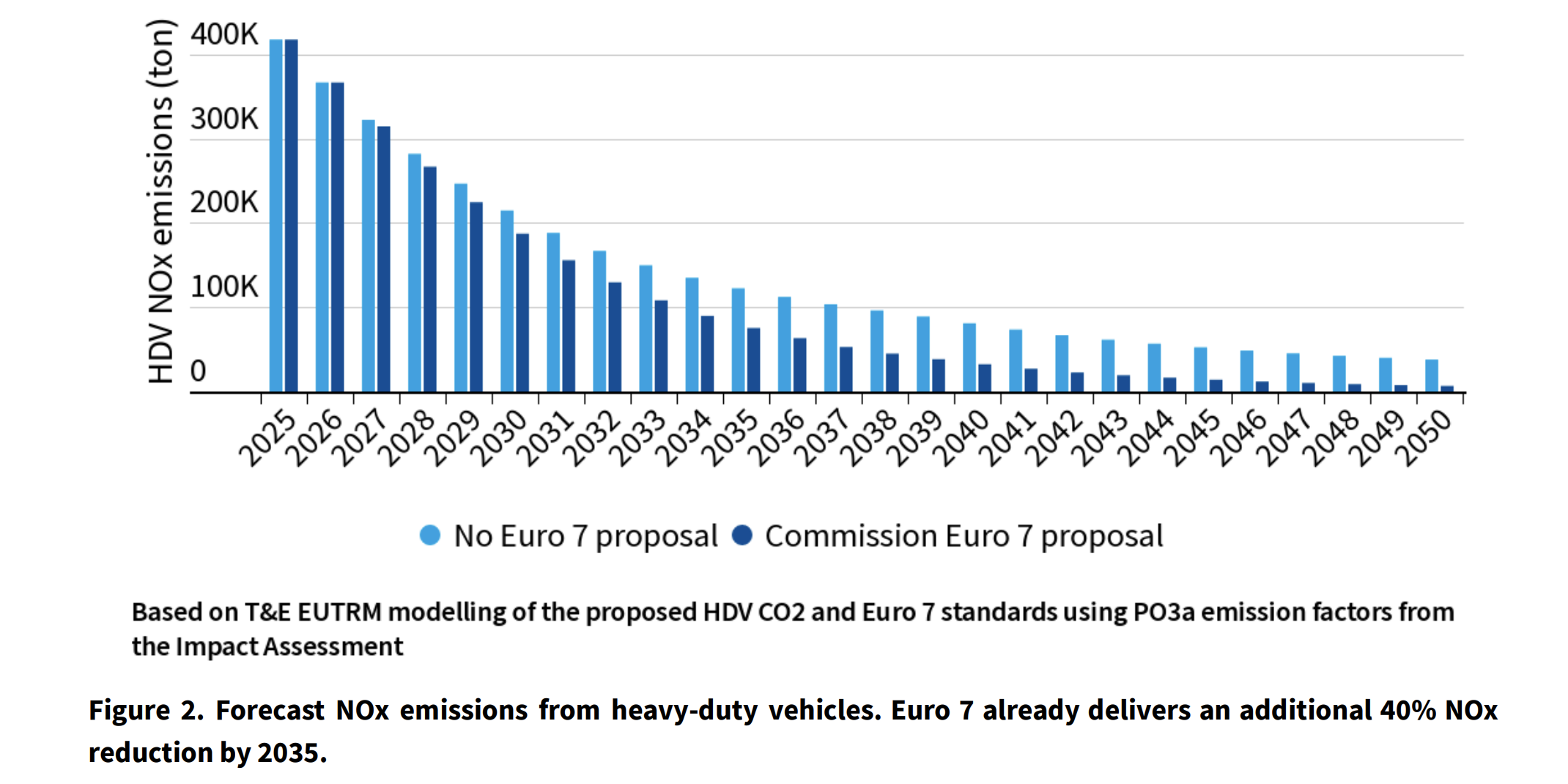Euro 7: Let’s Make It Count

Sign up for daily news updates from CleanTechnica on email. Or follow us on Google News!
T&E’s position paper provides updated analysis and policy recommendations for the Euro 7 regulation based on the Commission’s draft proposal.
Air pollution continues to be a huge problem across Europe, with almost all European citizens exposed to toxic air above World Health Organization (WHO) Air Quality Guidelines. Road transport continues to be a huge contributor to the problem as the biggest source of toxic NO2 and a significant source of particle pollution, causing 70,000 premature deaths per year and a multitude of preventable diseases, including cancer, stroke, and cardiovascular disease. Children and teenagers are particularly vulnerable to air pollution, as they are still growing.
Since 2018, the European Commission has been in the process of developing new Euro 7 emission standards for cars, vans, buses, and trucks to reduce pollution from road transport and to improve air quality. The draft proposal was published in November 2022. This position paper provides updated analysis and policy recommendations for the Euro 7 Regulation based on the Commission’s draft proposal.
Excerpt from position paper:
2. Why is Euro 7 still needed?
Despite the increasing rate of electrification driven by more ambitious car and truck CO2 standards, internal combustion engine (ICE) vehicles are not disappearing from European roads anytime soon. T&E previously forecasts that in the decade prior to the planned 2035 phase out date of new ICE car sales, almost 100 million new ICE cars will be placed on European roads. A potential allowance of the sale of e-fuel ICE powered cars after 2035 — subject to upcoming legislative debate — means that the EU might no longer be on a trajectory to completely eliminate tailpipe pollution from cars.
E-fuel powered cars still produce large amounts of pollution and research shows that when it comes to toxic NOx pollution they are as bad as fossil powered cars. T&E estimates that allowing e-fuel cars to be sold could put an additional 26 to 46 million more polluting e-petrol ICE cars on EU roads by 2050 (if instead of decarbonising shipping, e-diesel was wasted in powering EU cars this number could increase further). This means that almost 150 million polluting ICE cars could end up on EU roads by 2050 and continue to be sold in the EU indefinitely. All this makes an even stronger case for future proof strict Euro 7 limits, to assure robust air quality regardless of what technology is sold or driven on the roads.
Originally published by Transport & Environment.

Chip in a few dollars a month to help support independent cleantech coverage that helps to accelerate the cleantech revolution!
Have a tip for CleanTechnica? Want to advertise? Want to suggest a guest for our CleanTech Talk podcast? Contact us here.
Sign up for our daily newsletter for 15 new cleantech stories a day. Or sign up for our weekly one if daily is too frequent.
CleanTechnica uses affiliate links. See our policy here.
CleanTechnica's Comment Policy

